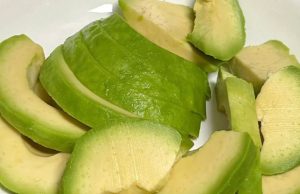
Aluminum foil is endlessly versatile. You can use it to wrap up leftovers, cover a bowl that needs to be stashed in the fridge for a bit, line a baking sheet, clean a pan, and more. Of course, you already know this. But it’s not infallible.
There are some aluminum foil uses we don’t recommend, either because they’re not effective or they’re just downright dangerous. We’re not suggesting you toss this versatile kitchen wrap, but do make sure you’re not committing any of these common aluminum foil mistakes.
1. Don’t put it in the microwave.
This one’s probably the most obvious, but a little reminder can’t hurt — never, under any circumstances, put anything with foil on it in the microwave. Unlike paper or glass, electromagnetic waves can’t pass through metal, so they bounce off — which could result in sparks and flames that could damage your oven or, worse, start fires.
2. Don’t use aluminum foil to bake cookies.

When it comes to baking cookies, it’s best to reach for parchment paper over aluminum foil. That’s because aluminum is extremely conductive, meaning any part of the dough that makes direct contact with the foil will be exposed to much more concentrated heat than the rest of the dough. What you end up with is a cookie that’s over browned or even burnt on the bottom and undercooked on the top.
3. Don’t line the bottom of your oven with it.
In theory, lining the bottom of your oven with aluminum foil as a catch-all for pesky drips and spills sounds like a good idea. In practice, it’s not. Even the folks at Reynolds Wrap say it’s a bad idea: “To avoid possible heat damage to your oven, we do not recommend using aluminum foil to line the bottom of your oven.” Instead, Reynolds says to use a piece of their Heavy Duty foil on the rack below whatever you’re baking. (Pull off a length that’s a little longer than the pan you’re using.) Note: They said rack — not the bottom of the oven. This will allow for proper heat circulation and catch any drips.

4. Don’t use it for acidic foods.
Acidic foods (like tomatoes, tomato sauce, and tart fruits) can interact with the aluminum and, after a few days, erode the foil. For these foods, you’re better off using plastic wrap or or even glass containers. Also: If you’re wrapping food up with foil, it’s best for a temporary solution, as a foil-wrapped burrito is not airtight.
5. Don’t use aluminum foil to store leftovers.
Leftovers will keep in the fridge for three to four days, but aluminum foil isn’t ideal for storing them. Foil is not airtight, meaning no matter how tightly you wrap it, some air will get in. This allows bacteria to grow faster. Instead, store leftovers in airtight storage containers or food storage bags.

6. Don’t bake potatoes in aluminum foil.
Think twice before wrapping your spuds in foil. Aluminum foil does trap heat, but it traps moisture, too. This means your potato will end up more soggy and steamed as opposed to baked and crisp.
In fact, the Idaho Potato Commission is adamant that baking potatoes in aluminum foil is a bad practice. Plus, storing a baked potato in the aluminum foil it was baked in gives botulinum bacteria the potential to grow.
So even if you do choose to bake your potatoes in aluminum foil, be sure to remove the foil before storing it in the fridge.




















